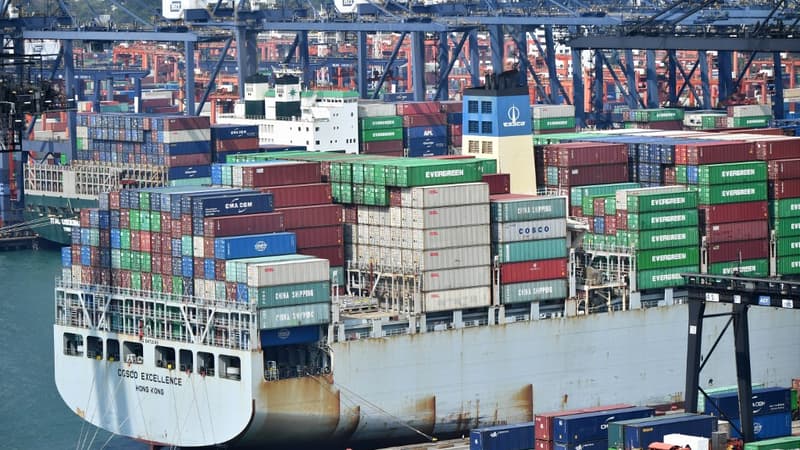It is time for shipping to return to normal, the health of which is based on global consumption: Freight rates, which spiked during the Covid crisis, are now returning to levels close to those of 2019.
After a surge that saw the price of a 40-foot container go from $1,500 in June 2020 to over $11,000 in September 2021, according to Freightos Baltic Index, freight rates have been falling steadily since March 2022. In December, the container went down to $2500.
The prices of maritime transport “are linked to supply and demand” and follow “the cycles of the world economy”, explained to AFP Arthur Barillas, general director of the Ovrsea freight forwarding company (majority owned by the Bolloré group).
In 2020, the health crisis caused the purchasing power of confined populations to shift towards consumer goods, leading to an explosion in e-commerce. Added to this is the aid for consumption implemented by the States. Shipping companies struggled to meet this sharp increase in demand, leading to skyrocketing freight prices.
As a result, shipping companies have reaped record profits. In 2021, the French CMA CGM, the third largest operator in the world, increased its net income tenfold to reach the impressive sum of 17.9 billion dollars. The Danish Maersk, the second largest airline in the world, has multiplied it by six.
“Very high uncertainty”
But the inflationary phenomenon that began in mid-2021, added to a normalization of consumption and followed by the start of the war in Ukraine, considerably bent the curve.
“We are currently observing a drop in demand that is leading to a normalization of international economic exchanges and a significant drop in freight rates,” said Rodolphe Saadé, CEO of CMA CGM, in a press release on the results of the third quarter of the group at the end of November. .
This sudden drop in freight prices “took everyone by surprise,” explains Arthur Barillas.
Consequence, according to him: “Companies find themselves with a lot of stock”, while the demand for consumer goods is expected to “fall by 6%” in 2023.
More ships for less cargo
Maersk thus saw its transported tonnage in the 3rd quarter of 2022 fall by 7.6% compared to the previous quarter.
At the same time, the shipping companies, which placed orders for ships in the midst of the health crisis, “will see the capacity of their fleets increase by 4%,” he analyzes.
More ships for less goods to transport: this will be the equation for carriers to solve, also given the rise in energy prices. CMA CGM spent an additional $822 million on energy in the third quarter compared to last year.
Likewise, “uncertainty is very high” for next year, although certain positive signs such as “inflation that is calming down”, make us feel “a slight breeze of optimism” that could make 2023 “less complicated than expected”. explains Barillas.
“The first quarter will be the barometer for next year,” he ventures.
Source: BFM TV


